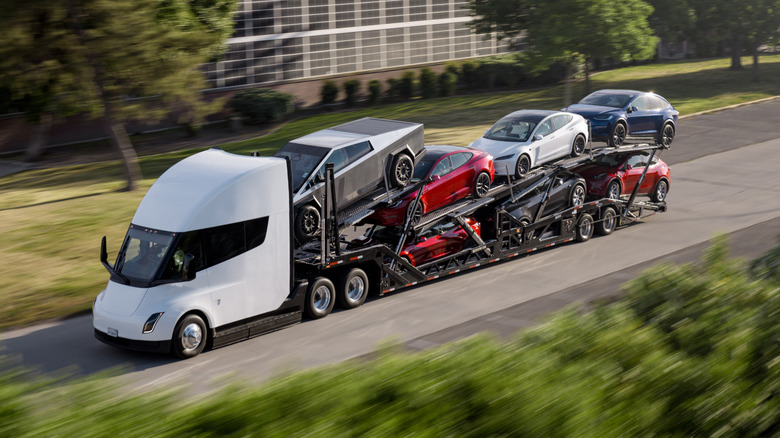If fishes were wishes, Elon Musk would be a trawler hauling a net across the Pacific. The Tesla Semi offered the promise of electrifying road freight transportation and enabling companies to replace the country’s 3.5 million truck drivers with the company’s so-called Full Self-Driving technology. Musk even incorrectly predicted that Tesla would be the second-biggest semi truck brand by 2024. Despite the electric truck’s launch in 2022, this Holy Grail of trucking profitability has yet to make its touted seismic shift because of production delays and other significant issues. Established truck manufacturers Freightliner and Volvo strengthened their foothold in the electric truck market.
Tesla began Semi deliveries in December 2022, with PepsiCo being the first customer to receive the truck. However, the Semi has yet to enter mass production at its Gigafactory in Nevada over two years later. The trucks received by the beverage and snack giant were actually pre-production models. As of last year, PepsiCo had only received 36 of the 100 trucks that the company ordered in 2017. According to Reuters, Tesla stated that the Semi will enter production by the end of this year. It’s a claim that you should probably not believe until it happens, and the electric automaker is still expecting to build 50,000 trucks per year.
A Semi hauling a trailer full of baggage
The Tesla Semi even managed to be recalled, with so few trucks on the road. In March 2023, Tesla issued a voluntary recall after discovering that faulty parking brakes were fitted to 35 delivered trucks. The recall fix’s new component even allowed the driver to engage and disengage the parking brake themselves, a feature that any other automaker would include by default on every vehicle it produces.
A Tesla Semi was later involved in a notable inferno on I-80 in California. A truck was left the road while driving through Emigrant Pass after it hit a tree and slid down a slope. The driver escaped unscathed, but the truck’s massive lithium-ion battery burst into flames. Cal Fire aircraft bombarded the truck with fire retardant and firefighters on the ground doused the battery with 50,000 gallons of water to contain the fire. The enormous effort to extinguish the fire wasn’t encouraging for customers.
Competitors took advantage of Tesla’s delays
Unlike Tesla, Freightliner was actually able to get an electric semi truck into production in 2022. The manufacturer’s eCascadia was able to garner large fleet orders. Food services company Sysco ordered 800 electric trucks and aimed to have them all on the road by next year. Freightliner claimed last year that the eCascadia had driven over 6 million miles in service across 50 customer fleets. It’s an impressive feat that’s not only a display of customer confidence but also of eCascadia’s reliability, something that the Tesla Semi can’t boast about. Freightliner is now even experimenting with autonomous driving technology on the Cascadia.
Real-world testing in 2023 showed that the Tesla Semi could drive 400 miles on a single charge, then recharge its battery pack up to 80% in just 45 minutes. These capabilities bested its competitors, including the Freightliner eCascadia, and allowed drivers to travel over 1,000 miles per day. It was an ideal solution given the protections that limit how many hours a driver can work in a single shift. However, Tesla simply couldn’t get its truck to market to capitalize on its advantage. It’s a similar complaint that many have about Tesla’s aging car lineup as Musk toys around with a polygonal pavement princess and a lackluster self-driving taxi project.





